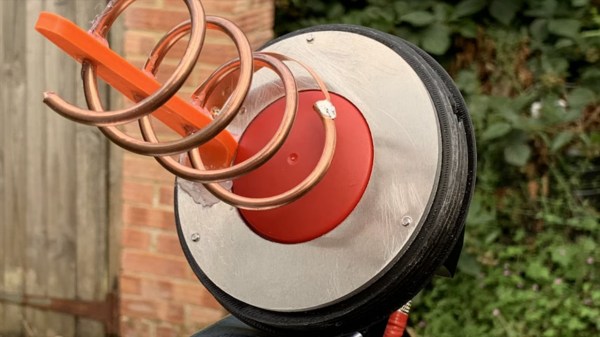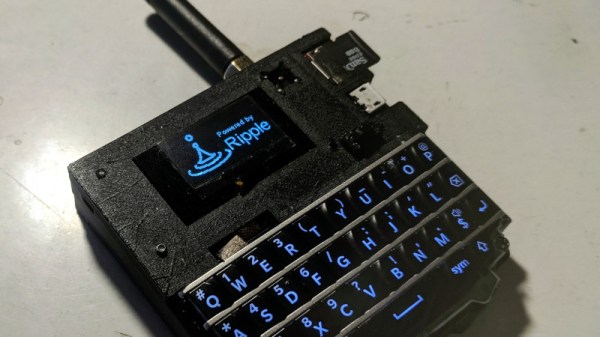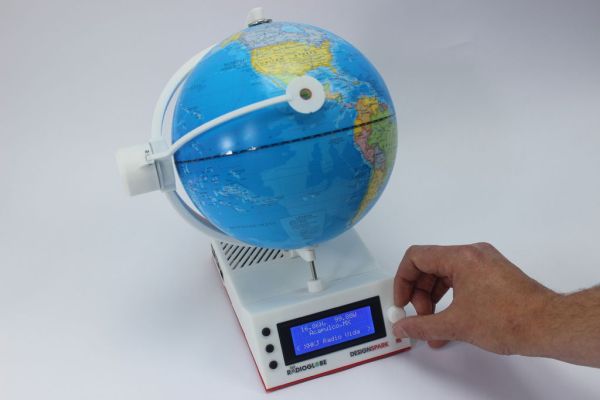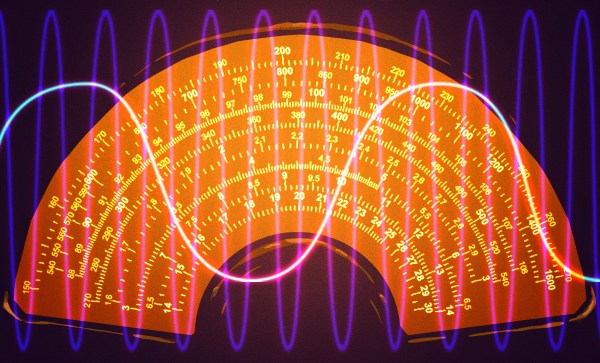Amateur radio operators like to say that working a contact in space can be done with a simple handheld transceiver and a homemade antenna. And while that’s true, it’s true only for low Earth orbit satellites such as the ISS. If you want to reach a satellite in geosynchronous orbit it’ll take a little more effort, and this dual-feed helical “ice cream cone” antenna could really help.
Until recently, the dream of an amateur radio repeater in geosynchronous orbit remained out of reach, but that changed with the launch of the Qatari satellite Es’hail-2 last year. Since then, hams from Brazil to Thailand have been using the repeater, and UK-based [Tech Minds] has been in the thick of the action. The antenna he presents is a hybrid design, needed because of the 2.4-GHz band uplink and 10-GHz downlink on the satellite, also known as QO-100. Both require a largish dish antenna, with the downlink requiring a low-noise block downconverter (LNB) and feed horn. The uplink side of [Tech Minds]’ antenna is a helical design, with three-and-a-half turns of heavy copper wire and a tuning section of copper strapping that attaches directly to an N-type connector. The helix is just the right size for the feed horn of an LNB for the downlink side, nestled in a hole in the helical antenna’s aluminum reflector disc. There are 3D-printed parts to support everything, plus a cone-shaped radome to keep it all safe from the elements.
It looks like a great design, but sadly, North American and East Asian hams can only dream about building one, since QO-100 is below the horizon for us. We’re jealous, but we’re still glad the repeater is up there. Check out this article for more on how Es’hail-2 got the first geosynchronous ham repeater.
Continue reading “A Hybrid Helical Antenna For The Es’hail-2 Geosynchronous Repeater”

















